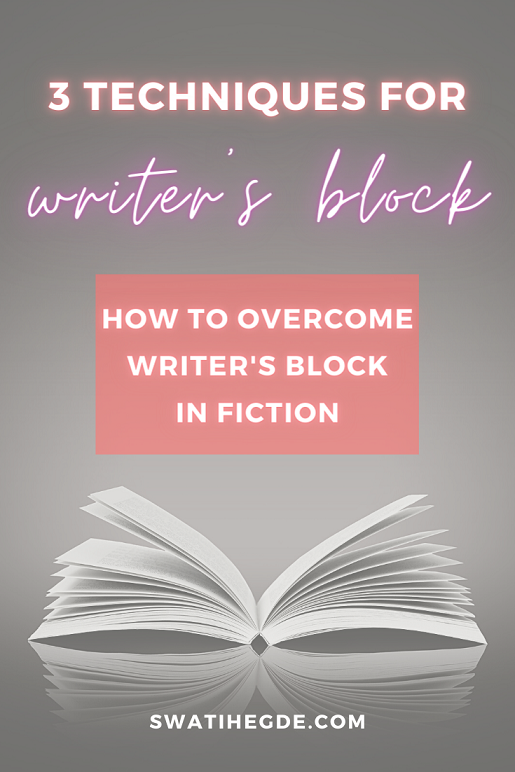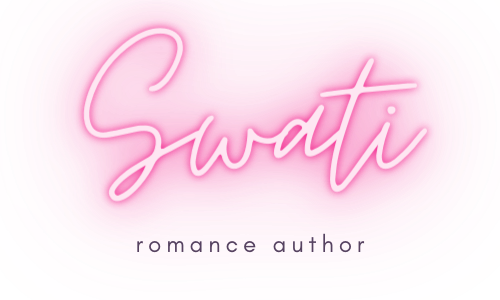
3 Techniques to Overcome Writer’s Block in Fiction
Writer’s block can be a real pain in the butt, am I right? You’ve got the perfect story idea, a juicy plot, and fleshed-out characters… in your head, not on paper. But never fear! Here’s what you can do to overcome writer’s block in fiction.

I’m known, in writing community terms, as a fast drafter. This means I churn out first drafts fairly quickly (a couple of months, tops), unless I’m struggling with my mental health (#bipolarwarrior) or actively working on other writing projects simultaneously. And I *do* experience writer’s block every now and then. But it’s rare for me to get stuck on a first draft because I don’t write the way most authors do–I write in a way that’s effective and efficient for my writing style.
Fair warning: writing advice is always subjective, and what I’m about to discuss is controversial. But if you’re open to a fresh perspective, keep reading to know the 3 techniques I use to overcome writer’s block in fiction.
Plantsing: Neither here, nor there

There are usually three types of writers: plotters, pantsers, and plantsers. This is a very hot topic in the writing community, and from what I’ve seen, most people are extreme plotters or extreme pantsers. In case you don’t know what these terms mean, here’s a quick refresher:
Plotters
These writers plan every little thing in their story. Think 10-page outlines, in-depth character notes, following beat sheets (like Save the Cat, Romancing the Beat, etc.). I do not understand these people, and I can never be these people, but this works very well for some authors.
Pantsers
Outline? Beat sheets? What are these things? A pantser writes “by the seat of their pants”, which means they plan and draft as they go. Instead of sticking to a structure or plot, they let the characters and story guide them. But of course, this might mean a pantser can only draft when inspiration strikes–which isn’t a good thing if you have writing deadlines. I’ve tried this before, and it’s really fun!
Plantsers
A plantser is somewhere in between a plotter and pantser (duh) and might do a wee bit of outlining or planning while also winging it in other ways. This is my favourite kind of writing, what I personally follow, and the one I think works best for writer’s block.
The reason I recommend plantsing for people who struggle with writer’s block is because the other two methods can be very troubling.
Case 1: If you plot everything that happens in the story and get stuck somewhere, you might not have much freedom to find other ways to fix the issue–because then that has a domino effect on the rest of the story that you’ve already plotted.
Case 2: If you’re pantsing your way through the first draft, you probably have no idea what scene to write next, which means when you’re uninspired, you give in to writer’s block and shelve your manuscript for days, weeks, or months. Oops!
But with plantsing, you get the best of both words. Stuck on a specific beat? No problem! Pantsing is the way to go for now. Can’t think of what to come up with as you write? Go back to your short outline and use your semi-plotting skills to get through writer’s block.
Easy, right?
Writing out of sequence (eek!)

This is something most authors don’t do because they cannot understand HOW one can potentially write out of sequence. When you’re completely pantsing or completely plotting, writing out of sequence can be hard. But as a plantser, I swear by writing out of sequence. This means that once I get a book idea and come up with a few characters, subplots, and a rough 1-page blurb/outline, the first scene I write might be the ending. Or the first chapter. Or the thirteenth. You get the gist.
I write what feels good, what I’m confident will work well, and what is easy to write. So if I’m stuck on chapter ten (because damn it, writing is hard!!), I skip ahead and write a scene from chapter eighteen. Even if it’s not perfect, even if it’s not half-decent. I’m still writing, and the word count is going up, and I know I would have written this scene later on anyway. It’s such an amazing writing hack that I’ve been using for years!
Revising as you draft

Eep, another controversial topic! I know some people believe first drafts aren’t supposed to be perfect, they might even be complete trash, and you should just accept that, move on, and not look back until you finish drafting. I agree in some ways–first drafts just have to have potential. That’s the bare minimum, at least with respect to my writing. But I personally love going back and rereading scenes I wrote yesterday and making changes, especially if I’m stuck on the scenes I want to write today.
Rereading your work helps you settle into your story before you get back to writing. It also motivates you to keep going, and might even offer some great ideas for how to proceed, especially if you’re stuck on the next scene.
So why wouldn’t you be open to revising as you draft?
Anyway, these were my top 3 techniques for overcoming writer’s block in fiction. Do you already use some of these techniques, or were they totally new to you? Which one will you try first? Let me know in the comments below.
PS: If you want support with your manuscript, click here to read about my editorial services! And be sure to follow along on my author journey on Twitter by clicking here.
Until next time!
Love hard & dream big,


How to Get a Literary Agent
You May Also Like

5 Literary Agent Red Flags for Querying Authors
March 18, 2022
How to Write a Damn Good Romance Novel
March 13, 2022
